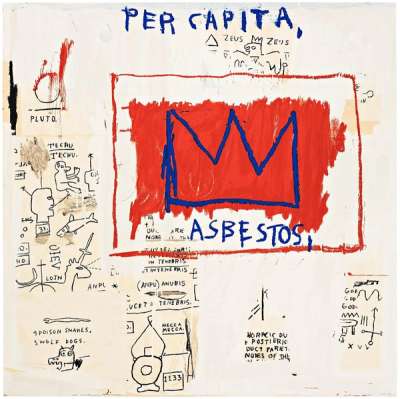
Rinso

Rinso
Unsigned Print
Jean-Michel Basquiat
£45,000-£70,000Value Indicator
$90,000-$150,000 Value Indicator
$80,000-$130,000 Value Indicator
¥430,000-¥670,000 Value Indicator
€50,000-€80,000 Value Indicator
$460,000-$720,000 Value Indicator
¥8,480,000-¥13,190,000 Value Indicator
$60,000-$90,000 Value Indicator
AAGR (5 years) This estimate blends recent public auction records with our own private sale data and network demand.
There aren't enough data points on this work for a comprehensive result. Please speak to a specialist by making an enquiry.
Medium: Screenprint
Edition size: 85
Year: 2001
Size: H 102cm x W 102cm
Signed: No
Format: Unsigned Print
TradingFloor
Track this artwork in realtime
Watch artwork, manage valuations, track your portfolio and return against your collection
Track auction value trend
Auction Results
| Auction Date | Auction House | Location | Hammer Price | Return to Seller | Buyer Paid |
|---|---|---|---|---|---|
| June 2017 | Phillips London | United Kingdom | |||
| June 2016 | Phillips London | United Kingdom | |||
| March 2016 | Christie's London | United Kingdom | |||
| December 2015 | Dorotheum, Vienna | Austria | |||
| April 2015 | Christie's New York | United States | |||
| November 2011 | Bonhams New Bond Street | United Kingdom | |||
| December 2010 | Phillips New York | United States |
Meaning & Analysis
Rinso is a screen print in colours by Jean-Michel Basquiat produced in 1982. In Rinso, the central figure is drawn in loose yet strident white marks, appearing to grit their teeth, with a tool raised in a clenched fist, perhaps depicting a protesting industrial or agricultural worker. The reference to ‘them shovels’ lends further evidence to this interpretation. The text across the chest of the figure reads ‘SLOGAN’ next to the copyright symbol, a motif which appears recurrently throughout Basquiat’s oeuvre in unexpected contexts.
Basquiat was intent on revealing society's paradoxes and contradictions. In this image we can observe an overarching tension between linear progress and fevers of demolition and reconstruction, manifested by the contrasts between the text reading ‘EVERLAST’ and ‘NEW RINSO’. Rinso is said to be ‘the greatest development in soap history’, contrasting against the social upheaval suggested by the protesting industrial worker. The squares which entrap the various textbites could at once represent soap bars and construction bricks.
The chaotic interplay of text and image in Rinso is emblematic of what Olivia Laing calls the “graphomaniac quality to almost all of Basquiat’s work”. She notes that “he liked to scribble, to amend, to footnote, to second-guess and to correct himself. Words jumped out at him, from the back of cereal boxes or subway ads, and he stayed alert to their subversive properties, their double and hidden meaning”.



